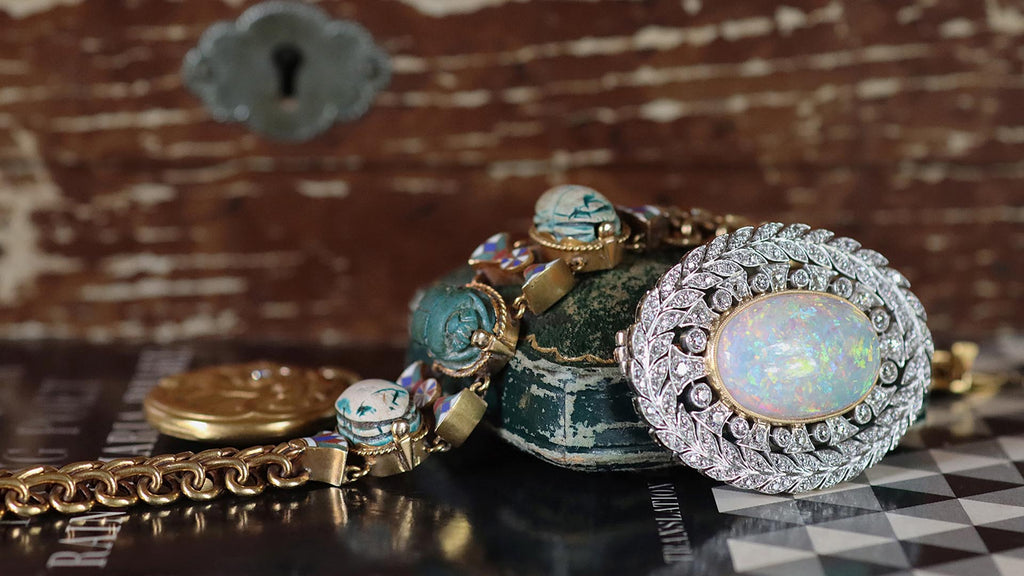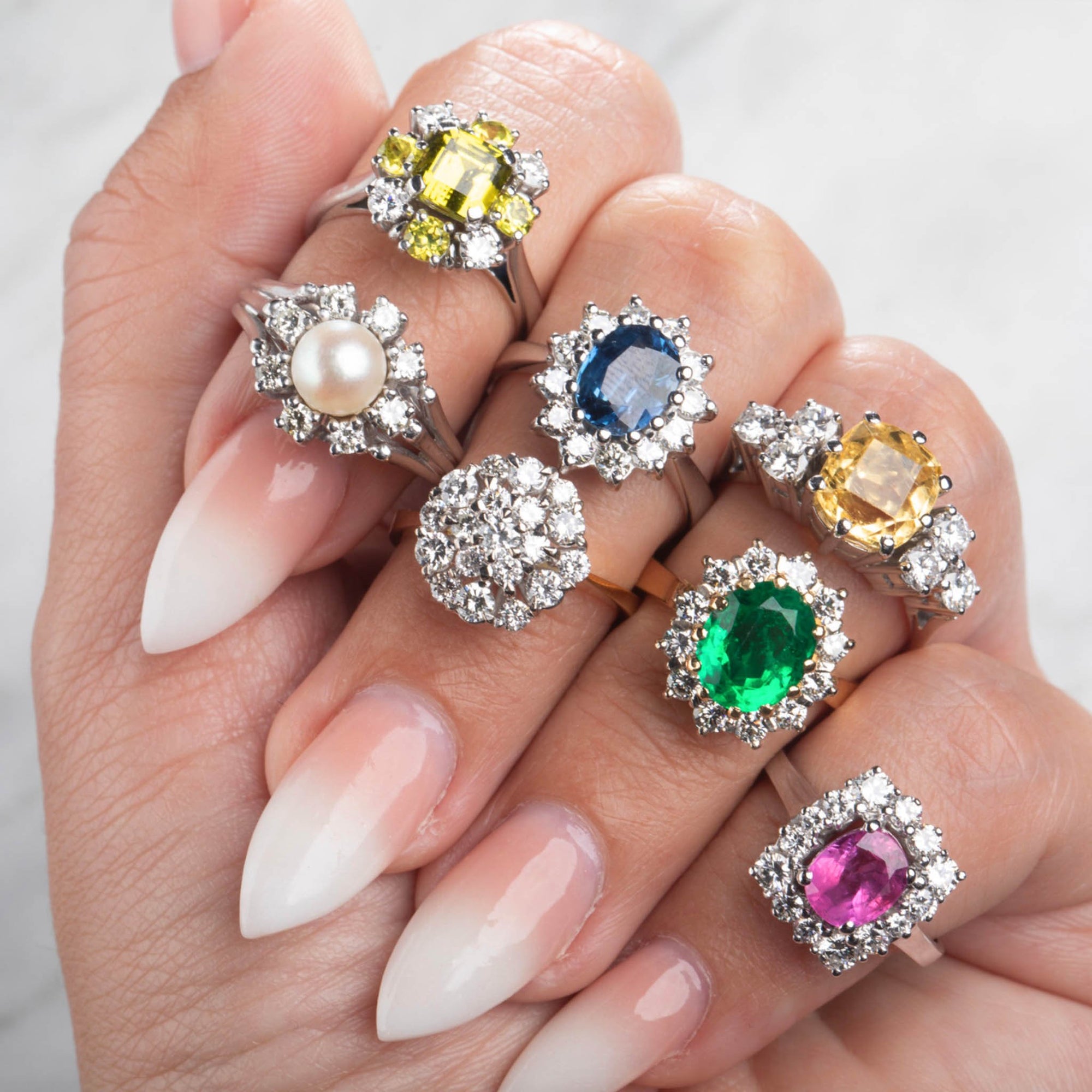Discover one-of-a-kind antique jewelry for gifts.
Unveiling the Appeal of Antique Precious Jewelry: Understanding Its Various Styles
Antique precious jewelry functions as a captivating home window into the past, offering understandings right into the cultural and artistic subtleties of different eras. Each design, from the emotive intricacies of Victorian jewelry to the liquid elegance of Art Nouveau, envelops the sentiments and innovations of its time. The succeeding luxury of Edwardian designs and the striking kinds of Art Deco further show this advancement. Yet, as we explore these distinct styles, one must consider exactly how the relevance of these items transcends mere appearances, welcoming a deeper examination of their historical and emotional vibration.
Victorian Age Jewelry
The allure of Victorian Era jewelry lies in its intricate craftsmanship and extensive symbolism, reflecting the social worths and psychological currents of the moment. Spanning from 1837 to 1901, this duration was characterized by an attraction with nature, grieving, and romanticism, which exceptionally influenced fashion jewelry style. Precious jewelry items often featured sophisticated motifs, such as flowers, pets, and complex fretwork job, crafted from products like gold, silver, and gemstones.

In addition, the technical innovations of the Industrial Change enabled more elaborate designs and using brand-new materials, such as diamonds and pearls. This democratization of deluxe made fashion jewelry extra accessible to the center class, leading to a proliferation of varied styles. On The Whole, Victorian Age jewelry continues to be a fascinating testament to the intricate interplay of art, feeling, and societal norms throughout a transformative historical duration.
Art Nouveau Creations
Defined by its organic kinds and streaming lines, Art Nouveau jewelry emerged in the late 19th and very early 20th centuries as a reaction to the automation and inflexible styles of the coming before ages. This artistic activity sought to welcome nature, integrating aspects such as blossoms, leaves, and creeping plants right into the layouts. Art Nouveau pieces often featured unbalanced structures, stressing a sense of motion and fluidness.

The usage of innovative techniques, such as enameling and the incorporation of glass, more recognized Art Nouveau jewelry from its precursors. The movement ultimately commemorated uniqueness and imaginative expression, making each item an unique masterpiece. Therefore, Art Nouveau creations proceed to captivate enthusiasts today, embodying a distinctive blend of style and nature that stays classic.
Edwardian Period Parts
During the very early 20th century, the Edwardian period saw a remarkable development in jewelry layout, marked by an emphasis on sophistication and opulence. This era, called after King Edward VII, spanned from 1901 to 1910 and is defined by the intricate workmanship and delicate visual appeals that specify its pieces.
Jewelry from this duration commonly features platinum settings, a product that allowed for finer and even more elaborate styles, boosting the play of light against the treasures. Making use of rubies was common, often prepared in fancy concepts such as fretwork and flower patterns. Edwardian fashion jewelry additionally embraced making use of pearls, which added a soft, luminous high quality to the items.
Breastpins, lockets, and earrings ended up being famous, showcasing the period's penchant for romantic and whimsical layouts. The "garland design," which involved the use of ribbon-like themes, was specifically prominent, mirroring the naturalistic impacts of the time. In addition, items typically incorporated tinted gemstones to produce striking contrasts, additional raising their aesthetic appeal. In general, Edwardian period jewelry remains a testament to a time when virtuosity and class preponderated in the world of adornment.

Art Deco Styles
Arising in the 1920s and flourishing with the 1930s, Art Deco makes represent a strong my review here separation from the ornate styles of previous ages, welcoming geometric shapes, streamlined types, and vivid colors. Defined by a feeling of modernity, this design movement drew ideas from various resources, including cubism, old Egyptian motifs, and the dynamic looks of the device age.
Art Deco fashion jewelry often features bold contrasts, integrating materials such as platinum, gold, and tinted gems to develop striking aesthetic results. Making use of intricate patterns and motifs, including zigzags, chevrons, and floral elements, showcases the craftsmanship of the time. Notably, the era likewise saw the introduction of new methods such as enamel work and using artificial stones, broadening the opportunities for imaginative expression.
Parts from this period typically emanate prestige and refinement, making them very searched for by enthusiasts and lovers alike. Art Deco fashion jewelry serves not only as a reflection of its time but additionally as a testimony to the long-lasting charm of its ingenious designs. It holds a considerable place in the background of antique precious jewelry, commemorated for its distinct style and social relevance.
Retro and Mid-Century Styles
Retro and Mid-Century designs, spanning from the 1940s to the 1960s, represent a dynamic period in jewelry layout that shows the optimism and technology of post-war society. antique jewelry austin. Characterized by vibrant styles and using ingenious materials, this era saw a separation from the elaborate detailing of previous designs, embracing rather a more spirited and exuberant visual
Fashion jewelry from this duration commonly features huge, colorful gems, including citrine, aquamarine, and tourmaline, additional info embeded in yellow gold-- a material that obtained importance as a result of its warm tones and malleability. The styles often included wayward motifs such as floral patterns, abstract forms, and geometric forms, capturing the spirit of modernity and flexibility that specified the age.
Notable developers like Cartier and Van Cleef & Arpels made considerable payments to Retro and Mid-Century styles, creating items that incorporated workmanship with artistic panache. The influence of Hollywood allure throughout this time led to a raised demand for statement fashion jewelry, making it a crucial accessory for the stylish elite. Gathering Retro and Mid-Century precious jewelry today offers enthusiasts a peek right click here for more into a transformative duration in background, identified by creative thinking and social evolution
Conclusion
The exploration of antique jewelry exposes a dynamic spectrum of styles, each symbolizing the social and imaginative subtleties of its corresponding period. From the psychological deepness of Victorian styles to the ingenious spirit of Retro pieces, these artifacts function as essential historical narratives. Recognizing the distinctive qualities of each period enhances recognition for the craftsmanship and relevance behind these adornments, strengthening their condition as not just ornamental items but also valuable links to the past.